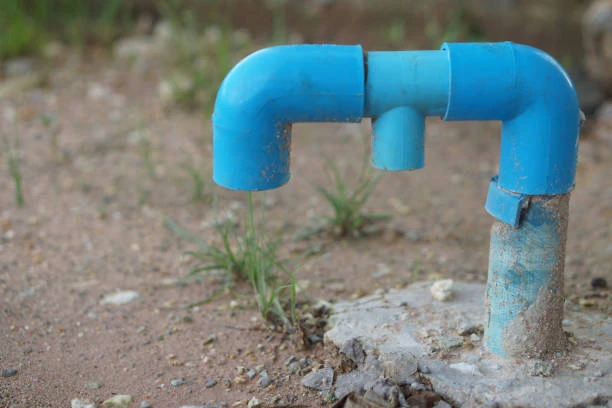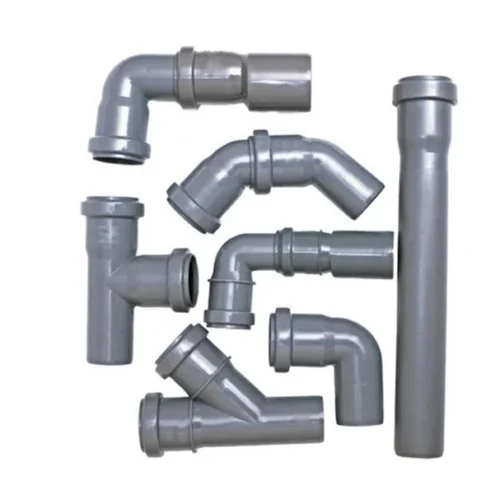In the modern world, plumbing systems are crucial to ensuring the smooth functioning of residential, commercial, and industrial spaces. As the demand for durable, cost-effective, and sustainable materials grows, the PVC pipe industry has emerged as a leader in providing high-quality solutions. Over the years, the PVC pipe market has shown significant growth, with innovations in technology and manufacturing techniques making these pipes more reliable, cost-efficient, and versatile than ever before.
This article explores why the CPVC pipes and fittings industry is thriving, the key advantages of using CPVC pipes, and how they continue to meet the evolving needs of the plumbing sector. From residential water supply systems to large-scale industrial applications, CPVC pipes have proven to be a valuable asset across various industries.
Why is the PVC Pipes and Fittings Industry Thriving?
The increasing adoption of CPVC pipes in both domestic and commercial plumbing systems is one of the primary reasons for the growth of the CPVC pipes and fittings industry. Several factors contribute to this growing demand, including durability, cost-effectiveness, ease of installation, and a range of application options.
1. Durability and Longevity
One of the main advantages of CPVC pipes is their durability. Unlike metal pipes that are prone to rust, corrosion, and wear over time, CPVC pipes are resistant to many types of corrosion, including rust and chemical degradation. This makes them ideal for a wide variety of applications, from fresh water systems to sewage and drainage systems.
PVC pipes also have a long lifespan, typically lasting up to 50 years with minimal maintenance. This durability makes them a preferred choice for construction projects, as they require fewer replacements and repairs, thus reducing long-term costs.
2. Cost-Effectiveness Of PVC
Compared to other materials such as copper or steel, CPVC pipes are incredibly cost-effective. The cost of raw materials, manufacturing, and installation is lower, making CPVC pipes an attractive option for both residential and commercial plumbing projects. Their lightweight nature reduces transportation costs, and their easy installation process minimizes labor expenses.
Moreover, PVC pipes are low-maintenance, which further adds to their cost-effectiveness. Unlike metal pipes that can corrode or get clogged over time, CPVC pipes maintain their structural integrity and flow capacity throughout their lifespan.
3. Ease of Installation Of PVC
Another reason for the growing demand for CPVC pipes is the ease with which they can be install. CPVC pipes are lighter than metal alternatives, making them easier to handle and install, even in hard-to-reach areas. The fittings are simple to connect, and installation requires fewer tools and skills compared to other types of pipes.
Additionally, CPVC pipes are resistant to mineral build-up, which is a common problem with metal pipes. This helps to maintain optimal water flow throughout the plumbing system.
4. Versatility and Range of Applications Of PVC
The versatility of PVC pipes is another factor driving the industry’s growth. These pipes are use in a wide range of applications, from residential plumbing to commercial and industrial uses.
- Residential Applications: CPVC pipes are commonly use for water supply, drainage, and sewage systems. Their ability to withstand pressure and resist corrosion makes them a popular choice for plumbing in homes and buildings.
- Commercial Applications: In commercial settings, CPVC pipes are use for large-scale water distribution, sewage systems, and irrigation. Their resistance to chemical corrosion and pressure tolerance makes them suitable for heavy-duty applications.
- Industrial Applications: CPVC pipes are also use in various industries, including chemical processing, food production, and pharmaceuticals. Their resistance to harsh chemicals and high temperatures makes them suitable for industrial plumbing systems.
5. Environmental Impact and Sustainability Of PVC
As the world increasingly focuses on sustainability and environmental preservation, CPVC pipes offer an eco-friendly solution. These pipes made from recyclable materials and can be repurpose once they reach the end of their useful life. Moreover, CPVC pipes have a smaller environmental footprint compared to metal pipes, as they require fewer resources to manufacture and are more energy-efficient in the long run.
Key Benefits of Using PVC Pipes
The booming CPVC pipe industry can be attribute to the numerous benefits these pipes provide, making them the material of choice for various plumbing projects. Here are some of the top advantages of using PVC pipes:
1. Resistance to Corrosion and Chemicals
One of the standout features of CPVC pipes is their high resistance to corrosion. Metal pipes, particularly those made of steel or copper, tend to degrade over time due to exposure to water, air, and chemicals. CPVC pipes, on the other hand, are not susceptible to rust, rot, or chemical reactions, making them highly reliable for both water and sewage systems.

2. Lightweight and Strong Of PVC
Although CPVC pipes are lightweight, they are incredibly strong and durable. Their strength-to-weight ratio makes them ideal for transportation and installation. This characteristic also makes CPVC pipes resistant to damage during installation, reducing the risk of cracks or fractures.
3. Smooth Interior for Better Flow Of PVC
The interior of PVC pipes is incredibly smooth, which reduces friction and helps maintain optimal flow rates. This feature is especially important in drainage and sewage systems, as it prevents the accumulation of debris, clogs, and blockages, ensuring efficient water flow over time.
4. Non-Toxic and Safe Of PVC
PVC pipes are non-toxic and safe for use in potable water systems. They do not leach harmful chemicals into the water, making them a safe option for drinking water transportation. This is particularly important in regions where water quality and safety are of utmost concern.
5. Customization and Flexibility
PVC pipes come in various sizes, colors, and pressure ratings, allowing for customization to meet the specific needs of any project. This flexibility makes CPVC pipes adaptable to different applications, from residential plumbing to large industrial systems.
Future Trends in the PVC Pipes Industry
The PVC pipe industry continues to grow as new technologies and manufacturing methods emerge. Key trends include:
1. Smart Pipes
With the advent of the Internet of Things (IoT), the integration of sensors and smart technologies into CPVC pipes is gaining momentum. These smart pipes can detect leaks, monitor pressure, and optimize water flow, offering real-time data that can help prevent system failures and reduce maintenance costs.
2. Increased Demand for Sustainable Products
As sustainability becomes a key focus for industries worldwide, the demand for eco-friendly plumbing solutions like CPVC pipes is expected to rise. Manufacturers are increasingly adopting greener production processes and developing more recyclable materials, which will further boost the growth of the PVC pipe market.
3. Improved Manufacturing Technologies
Advancements in manufacturing technologies, such as 3D printing and automated production, will likely reduce production costs and improve the efficiency of CPVC pipe manufacturing. This will make PVC pipes even more affordable and accessible to a wider range of industries and consumers.
4. Expansion into Emerging Markets
As urbanization and industrialization continue to accelerate in emerging markets, the demand for reliable plumbing infrastructure is growing. This presents significant opportunities for the CPVC pipe industry to expand into new regions and cater to the needs of developing economies.
Conclusion
The PVC pipes and fittings industry is thriving due to the numerous advantages that PVC pipes offer in terms of durability, cost-effectiveness, ease of installation, and versatility. With a wide range of applications in residential, commercial, and industrial sectors, CPVC pipes continue to be the preferred choice for plumbing systems worldwide. As the industry continues to innovate and evolve, the future of PVC pipes looks bright, with advancements in technology and a growing emphasis on sustainability ensuring that PVC pipes remain a vital component of modern infrastructure.
Frequently Asked Questions (FAQ)
1. What are the primary uses of PVC pipes?
PVC pipes are commonly used for residential water supply, drainage, sewage systems, irrigation, and industrial applications, including chemical processing and water treatment.
2. How long do PVC pipes last?
PVC pipes can last up to 50 years with minimal maintenance, thanks to their resistance to corrosion and wear.
3. Are PVC pipes environmentally friendly?
Yes, CPVC pipes are recyclable and have a lower environmental impact compared to metal pipes. They are also energy-efficient in the long run.
4. Can PVC pipes be used for hot water systems?
CPVC pipes are primarily used for cold water systems. For hot water applications, CPVC pipes are often recommended due to their higher temperature resistance.
5. How are PVC pipes installed?
CPVC pipes are installed by cutting them to the required length, applying a solvent cement to secure the fittings, and ensuring a leak-free connection.

















